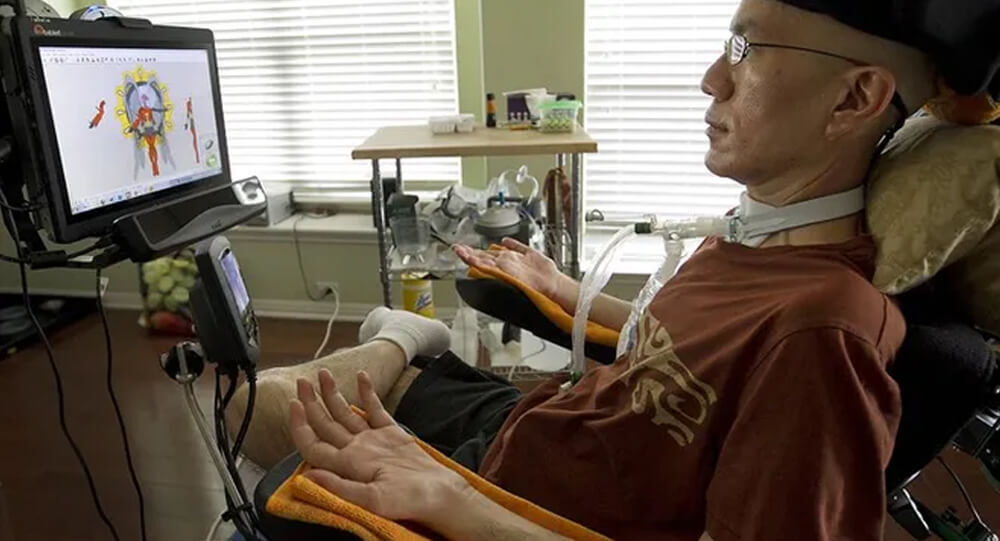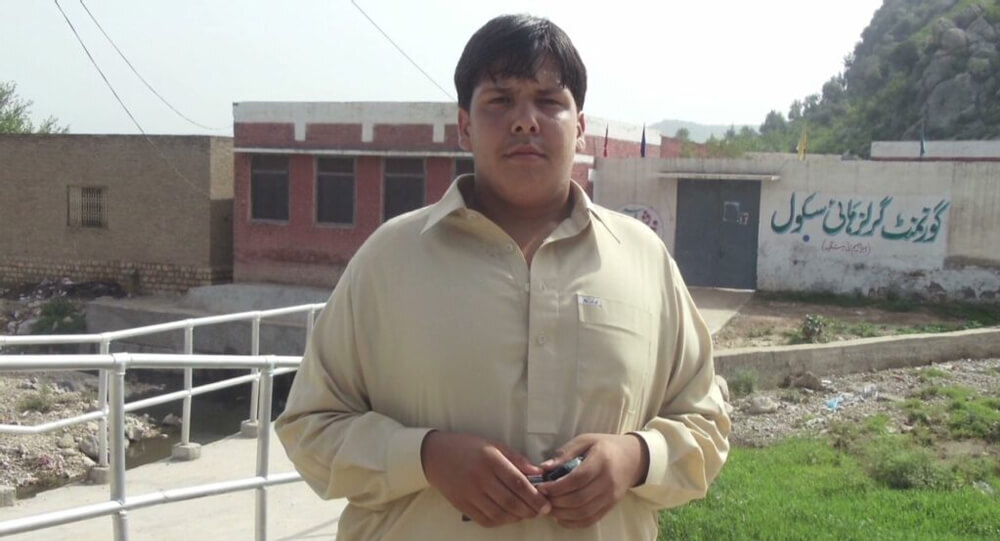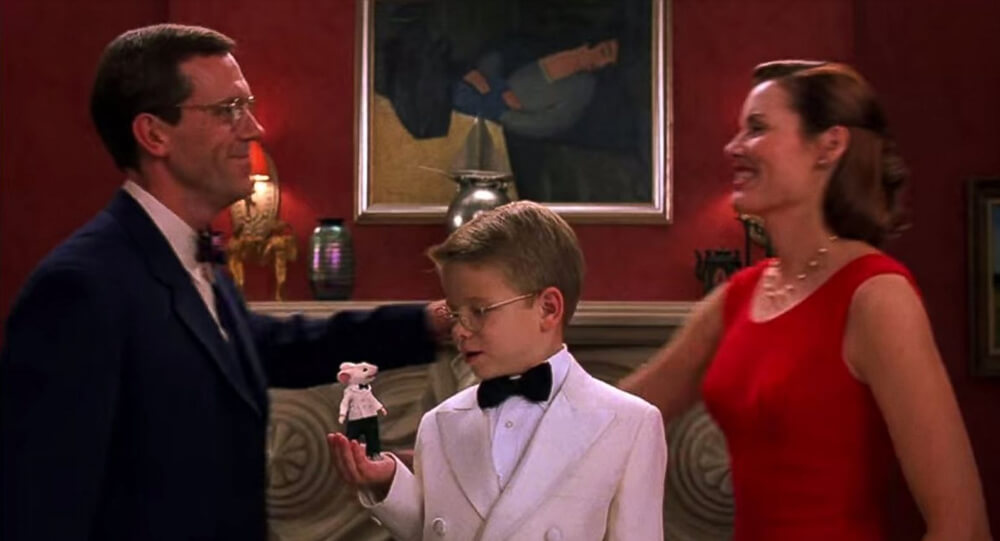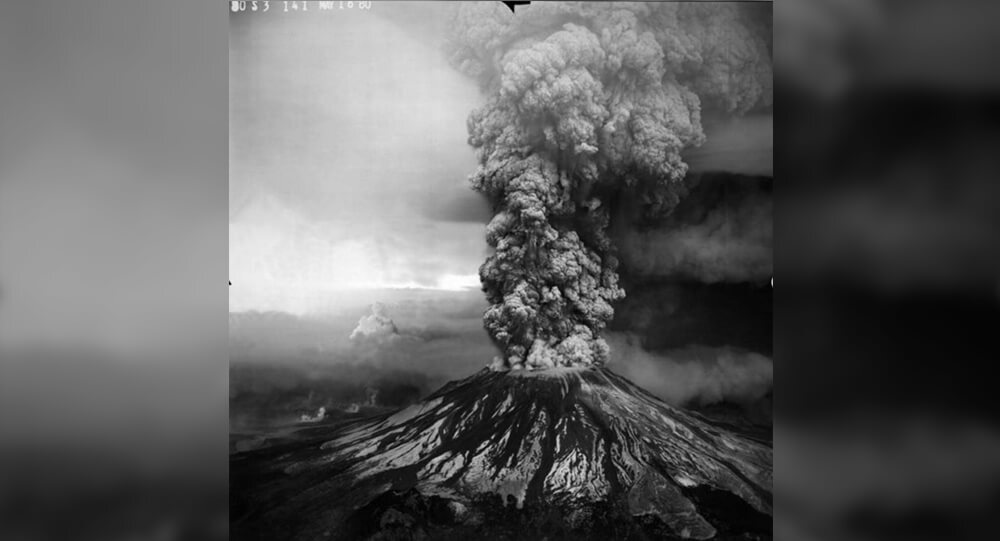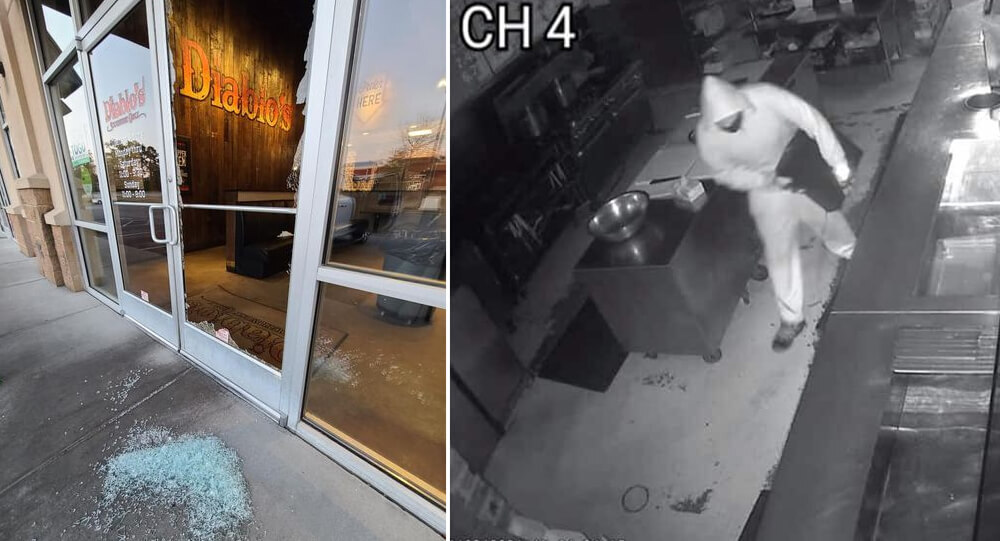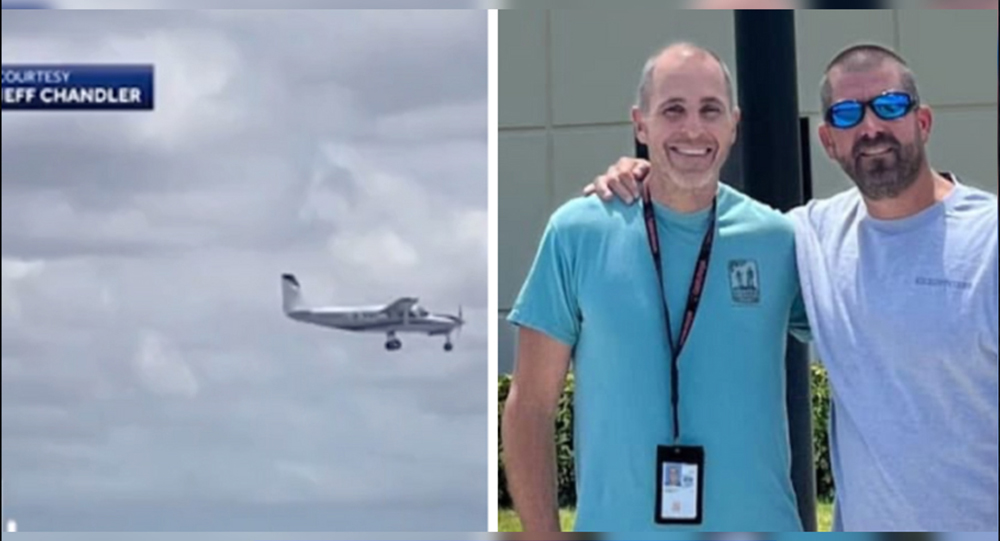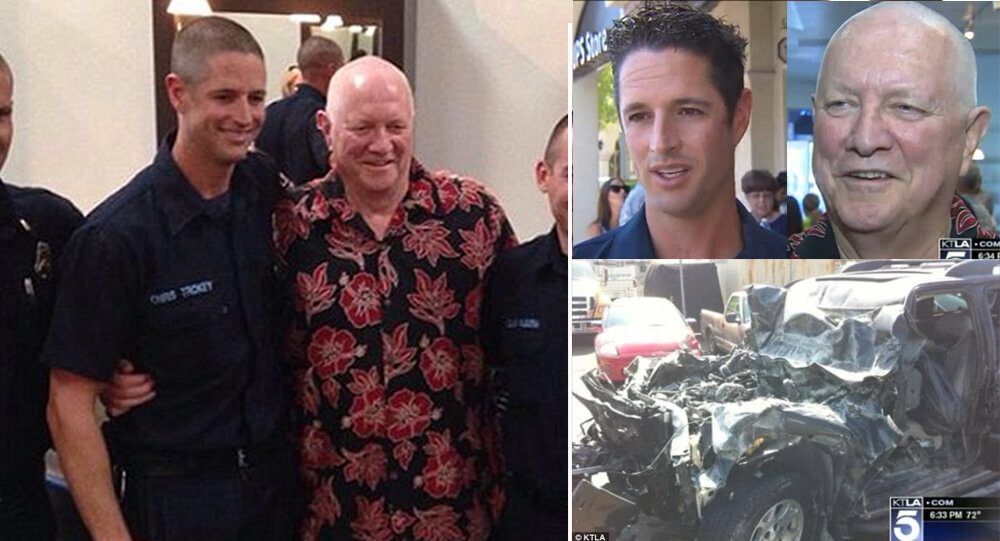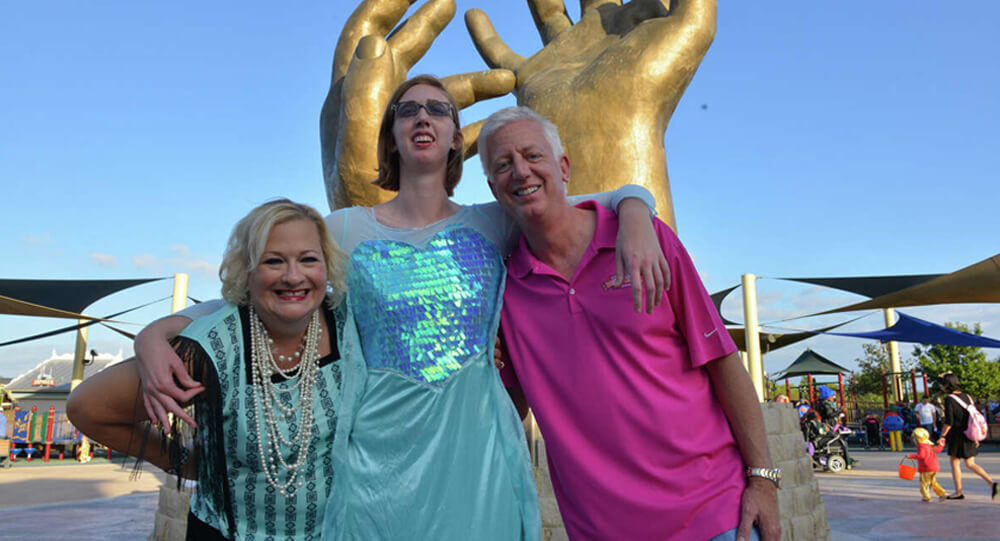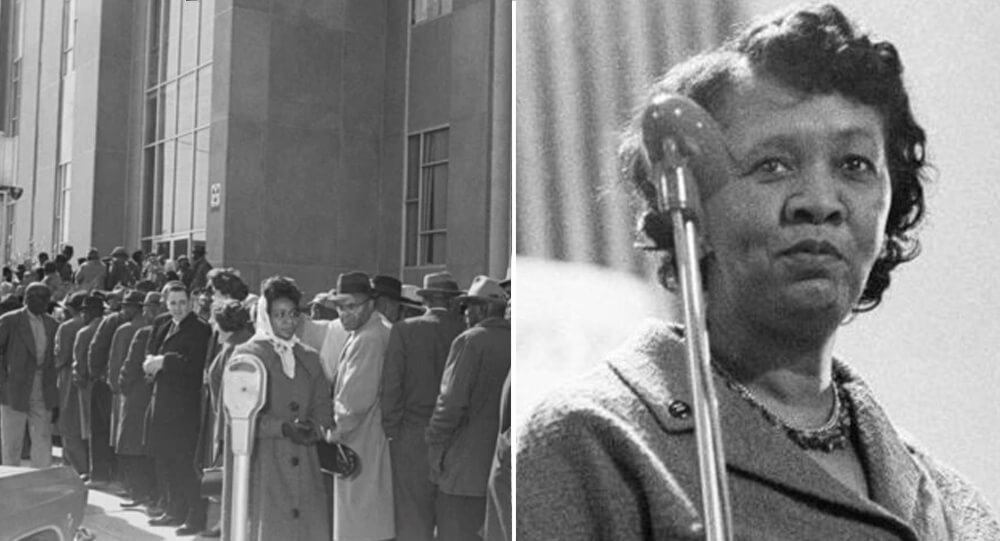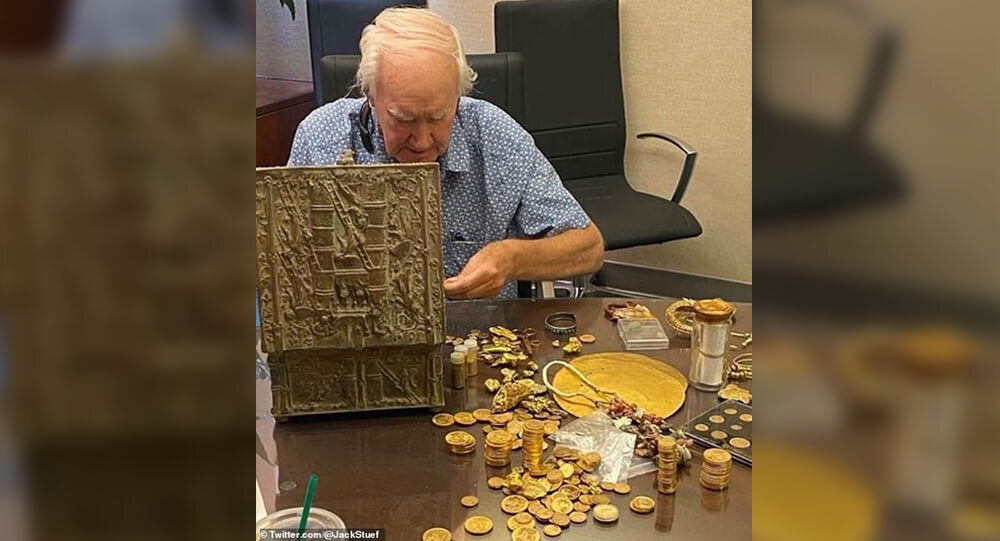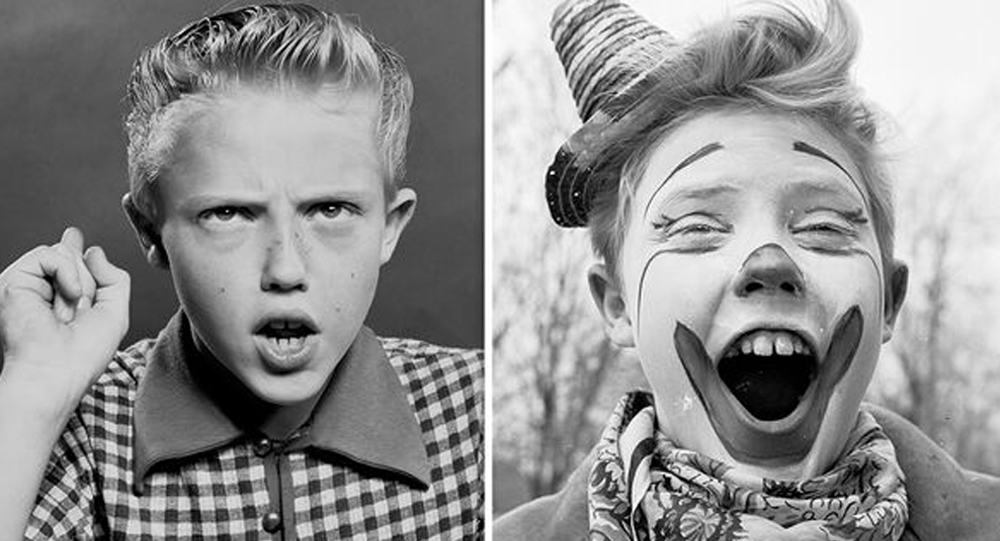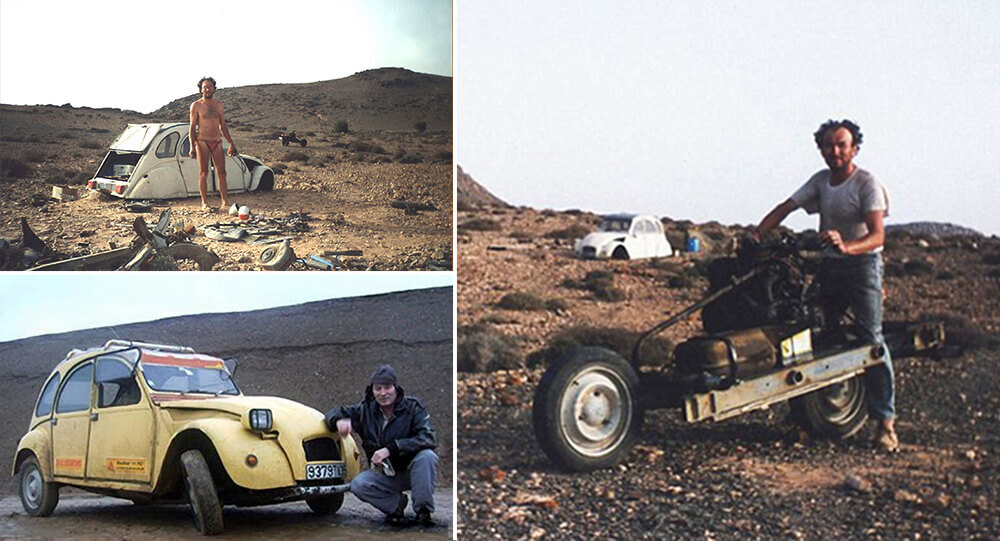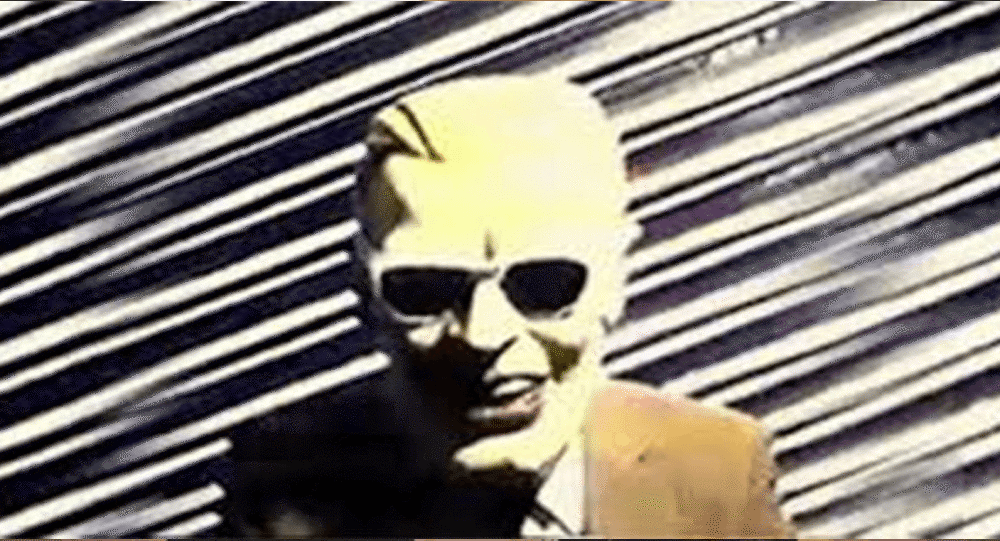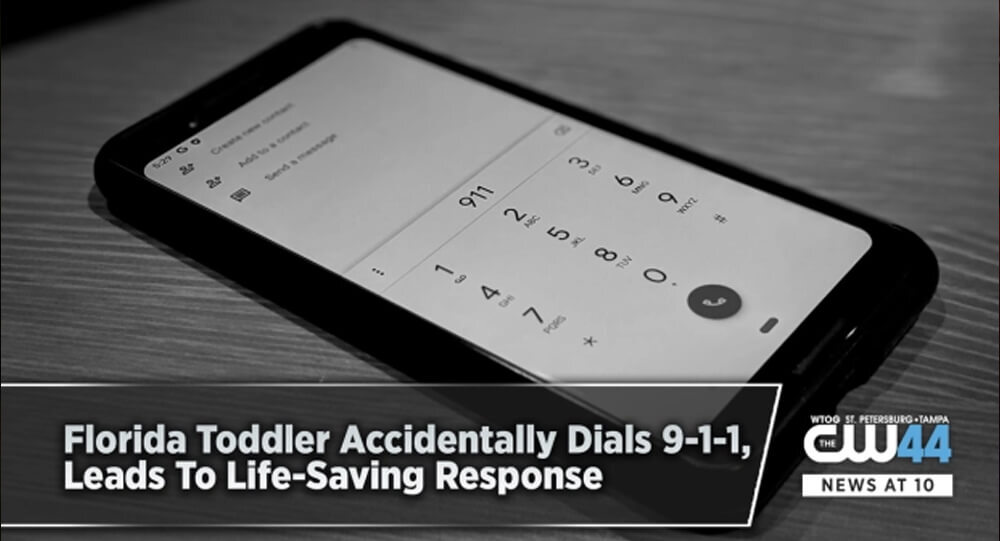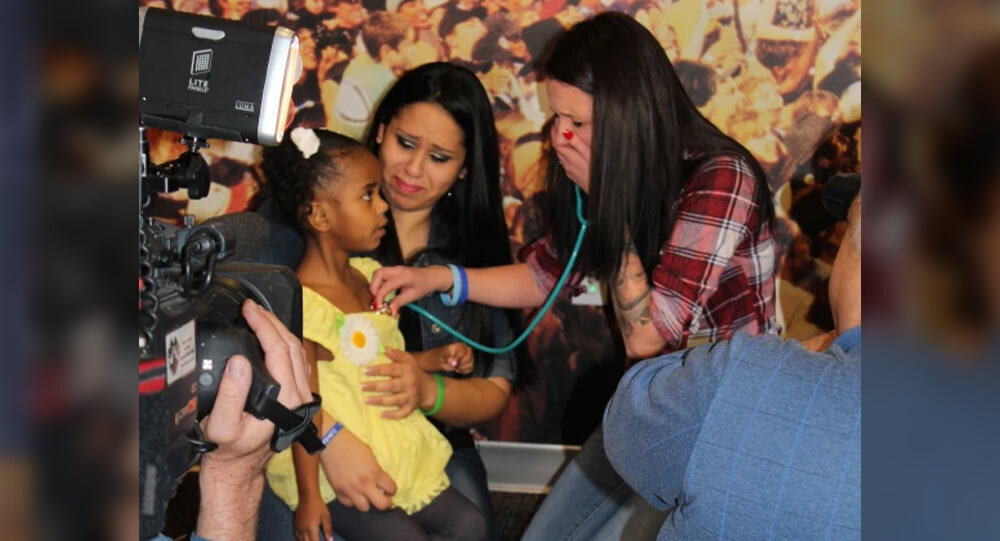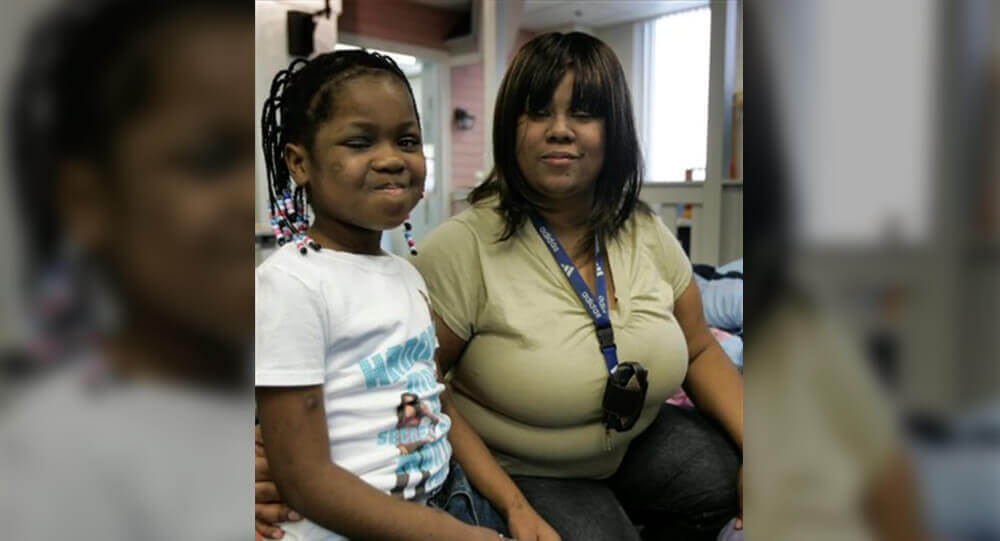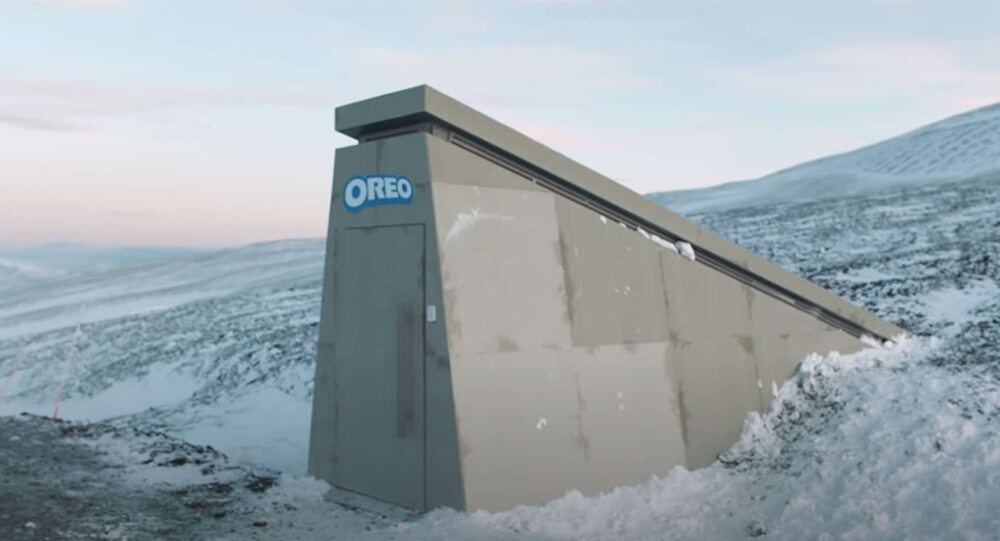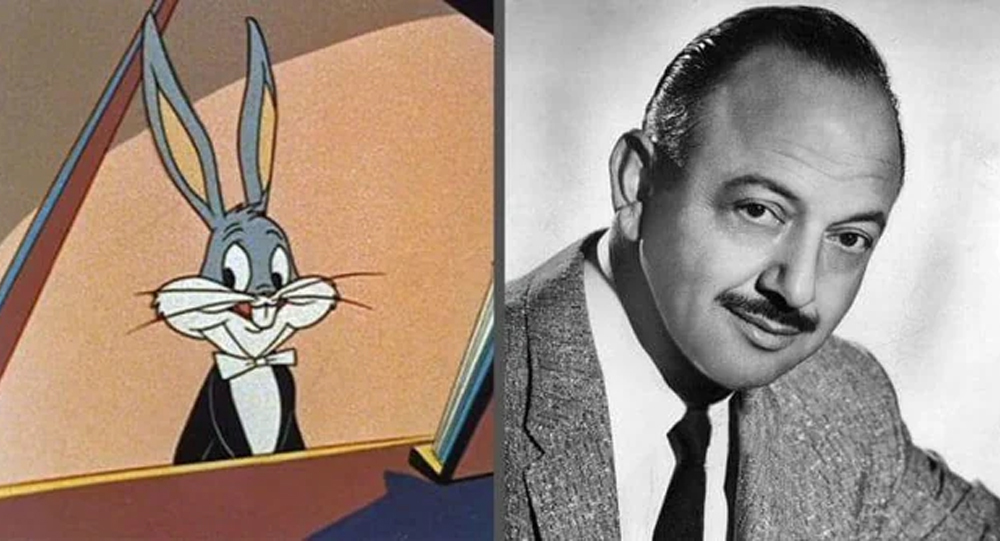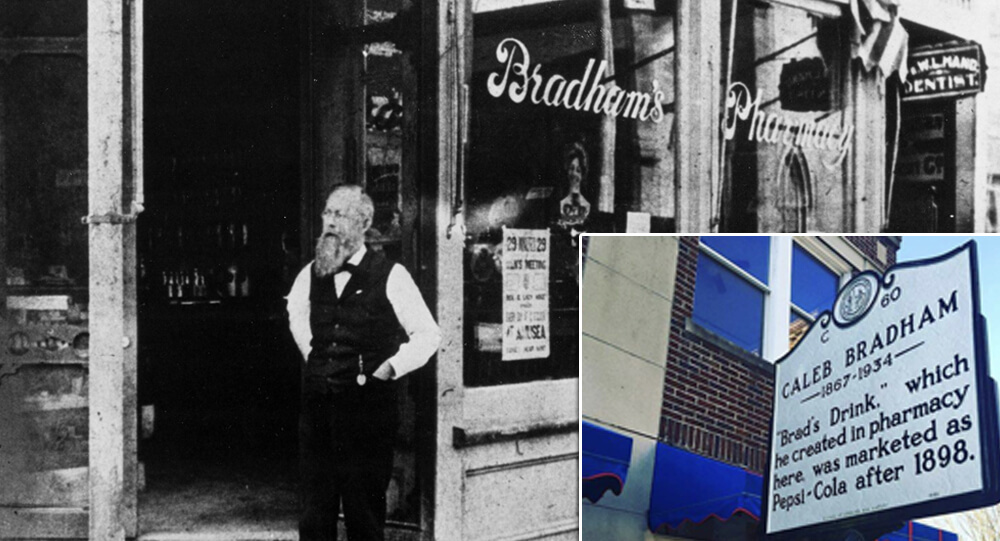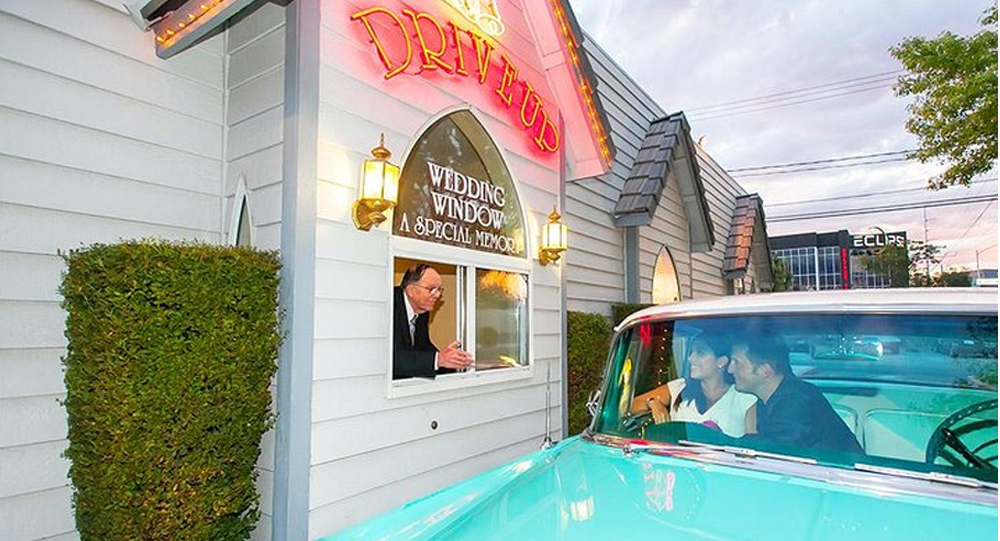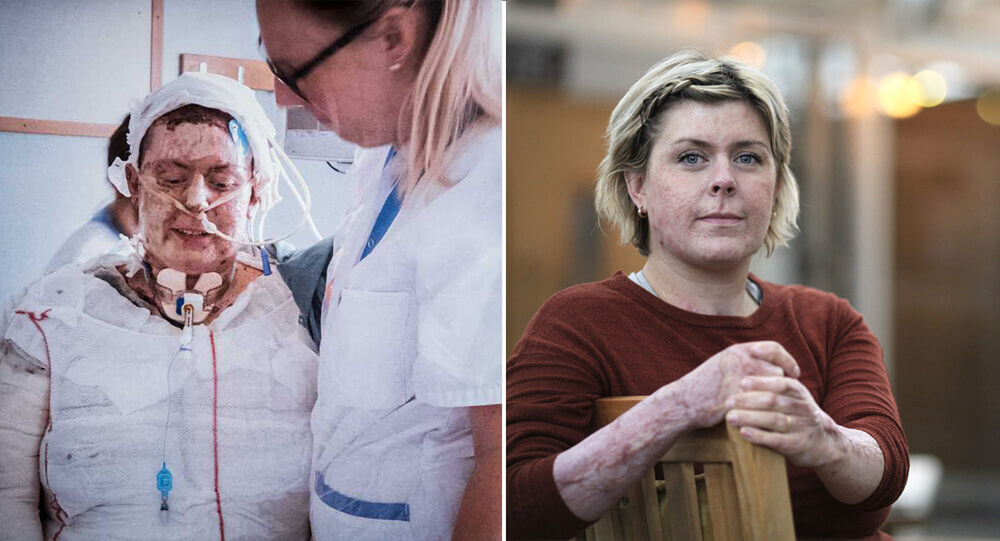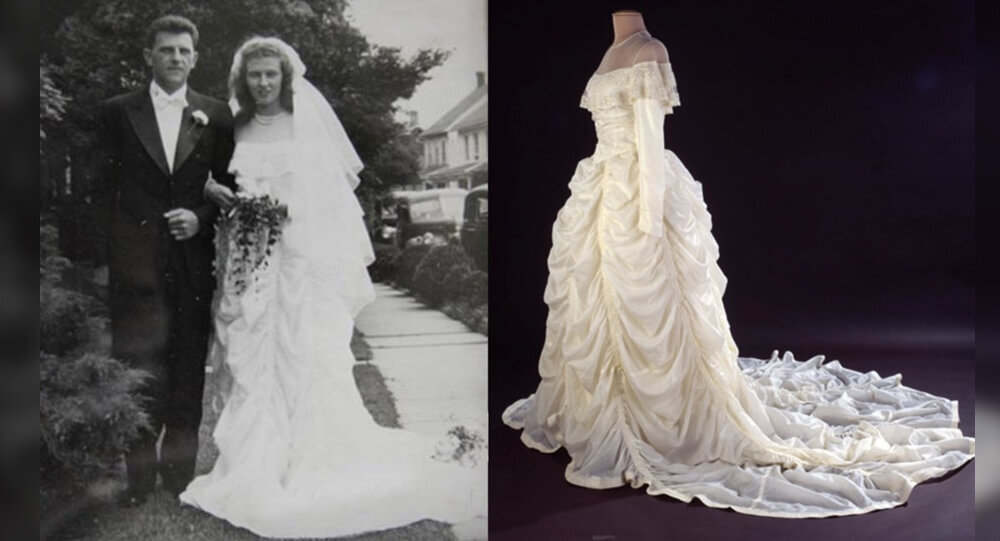
Ingenious brides from all over the nation showed their creativity and support for the war effort by making wedding gowns out of parachutes during World War II. Because it was difficult to find fabric for bridal gowns, brides learned to improvise or go without. The white nylon or silk fabric became surplus if a parachute was rejected for any reason, and parachute manufacturers were held to high standards. Many brides used that extra fabric to make their wedding dresses. This is the tale of a bride who married in a parachute during World War II.
The Navy created WAVES (Women Accepted for Volunteer Emergency Service) in the summer of 1942. By assigning enlisted women to their onshore positions in place of men, WAVES hoped to free up men for sea duty. Massachusetts native Janet Gleason, age 20, made the decision to join the WAVES. She worked as a Parachute Rigger Second Class at Joint Fort Dix Army Air Force Base in New Jersey.
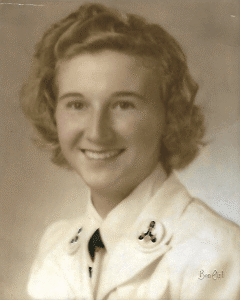
Reo Arland Casper, a 19-year-old native of Idaho, signed up for the draft that same summer. He soon joined the US Marines and was accepted into their top paratrooper training program. 40% of potential submariners failed the rigorous fitness test required for enrollment in the program. They were also forbidden from getting married. Reo received specialized training at Fort Dix before being elevated to the rank of Sergeant.
In the classroom, where Paramarines and Navy WAVES both attended training, Janet caught Reo’s attention one day as they were learning how to fold and pack a parachute.
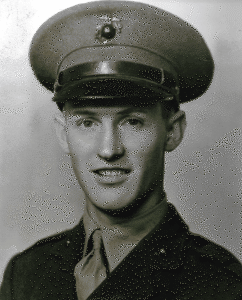
They became good friends. Reo and Janet loved attending concerts at Radio City Music Hall and taking long walks in Central Park. They quickly fell in love. Reo had finished his training and was getting ready to leave for another country. He had one more jump to make before graduating, and Janet packed his chute with care. Reo prepared to ship after receiving orders. He requested Janet’s hand in marriage before departing. As soon as the war was over, they intended to get married.
Reo and Janet consistently wrote each other letters and hoped to be reunited someday. Given that she couldn’t afford a wedding gown, Janet’s commanding officer gave her a Japanese silk parachute. The stunning silk was the ideal material for a wedding dress.
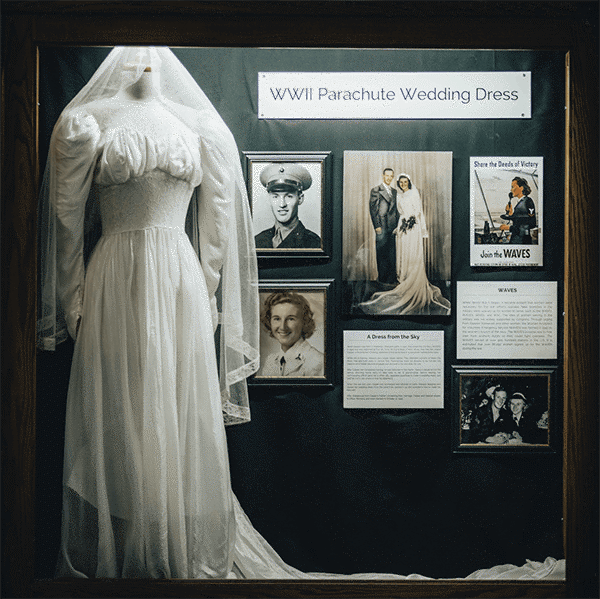
Janet created and sewed her wedding dress then carefully storing it away while she awaited the end of the war. Reo finally experienced that day on October 19, 1945, when he traveled back to the country for his formal discharge in California. He made plans with Janet for them to meet up in his native Idaho. After three years, Janet boarded a train, bringing them back together at last.
The couple faced difficulties as their wedding preparations got underway when Reo’s mother objected to the wedding. She was worried about the couple’s contrasting religious beliefs. Reo and Janet decided to elope on October 31, 1945, after traveling to Dillon, Montana. After meticulously designing and sewing a wedding gown from a parachute, Janet was finally able to wear it.
The marriage between Reo and Janet lasted 58 years. Reo died in 2005, a year after she did in 2004. The historical dress was later worn by both their daughter and their son’s bride, and today is housed at the Smithsonian Institution as a significant item in American History.
The story of parachute wedding dress
During an unsuccessful WWII mission, Maj. Hensinger, a B-29 pilot, managed to save both the parachute and the groom. He was returning to an Allied base in August 1944 after bombing Japan’s Yowata city when his engine caught fire. Over China, the entire crew was forced to jump ship, and that’s when the life-saving epic parachute opened. That night, as Hensinger waited for dawn, it also served as a blanket and a pillow.
Fortunately, the crew was able to reunite the following day, and they were welcomed by hospitable Chinese. Maj. Hensinger made it back to the US safely, and when the war came to an end a year later, he moved back to his home state of Pennsylvania, bringing his life-saving parachute with him.
Once Claude was back in the real world, he made the decision to find Ruth and start dating her. When it came time to make the marriage proposal, Ruth was surprised to see Hensinger on his knee instead of offering a ring but the priceless cloth that had helped him during the war.

The Inspiring Journey of Francis Tsai, Marvel Comics artist diagnosed with ALS
Francis Tsai, an American illustrator and conceptual artist who worked for Marvel Comics, was diagnosed with ALS in 2010. After he lost the ability to move his hands and arms, he started painting digitally on his cellphone with his right big toe. After he could not move his feet anymore, he began using eye-gaze technology to keep drawing.

Aitzaz Hasan, Pakistani school boy who sacrificed his life from suicide bomber
Aitzaz Hasan, a 15 year old Pakistani school boy, sacrificed his life while preventing a suicide bomber from entering his school of 2000 students. His father said "My son made his mother cry but saved hundreds of mothers from crying for their children."

Missing Masterpiece Discovered in the Background of ‘Stuart Little’
In 2009, Gergely Barki, an art historian, was watching the film Stuart Little (1999) when he spotted an original long-lost painting used as a prop. Called Sleeping Lady with Black Vase, this painting was the work of Hungarian avant-garde painter Róbert Berény. The painting had been considered lost after World War II.

Why Is the N Lowercase in 7-Eleven?
7-ELEVEN is thought to have a lowercase "n" in its logo because the company president's wife believed that a logo with all caps would seem harsh, while a lowercase "n" would make it more graceful.

Timothy Ray Brown, who inspired millions of HIV-positive people, died of leukemia
Timothy Ray Brown, also known as "The Berlin Patient," was the first person to be HIV-free. He was diagnosed with leukemia in 2006 and had a bone marrow transplant in 2007 as part of his treatment. The transplant helped him overcome the otherwise incurable disease thanks to the rare, HIV-resistant donor.

The Terrifying Mount St. Helens Eruption is Captured by the Robert Landsburg Photographs
Robert Landsburg, a photographer who upon realisation that he is going to die in the mount St. Helens eruption of 1980 lay down on top if his equipment to preserve the photographs he had taken of the events. Landsburg‘s body was found 17 days later, buried in ash with his film intact.

This whale tail sculpture saved a train that went off the rails
A train in the Netherlands failed to stop in time and broke through the emergency barrier. It's being held up by the statue of a whale's tail.

Restaurant owner offers burglar a job rather than filing charges
On April 13, 2021, Diablo’s Southwest Grill was robbed, but instead of pressing charges, owner Carl Wallace decided to offer the burglar a job in his business and said “There are better opportunities out there than this path you’ve chosen,”.

Passenger with No Flying Experience Lands Plane in Florida: A Real-Life Aviation Miracle
A passenger with no flying experience landed a twin-engine plane in Florida after the pilot died mid-flight. With guidance from air traffic control, he safely touched down—a real-life aviation miracle caught on radar and radio.

Paramedic Rescues Doctor Who Saved Him 30 Years Earlier
In 1981, a doctor helped save the life of a 3.2 pounds premature baby boy. Thirty years later, the boy, who had grown up to be a firefighter-paramedic, helped in saving the same doctor from a car accident.

Morgan’s Wonderland, the world’s first ultra-accessible amusement park
Gordon Hartman was heartbroken when his special needs daughter, Morgan, was rejected by a group of children playing by the hotel poolside. He then set out to build a place where all children can play together. This led to the development of the world’s first ultra-accessible amusement park, Morgan’s Wonderland

chand baori stepwell in Rajasthan India, Ancient cooling technique
This Chand Baori stepwell in Rajasthan, India is over 1200 years old. It’s called Chand Baori. The air at the bottom of the well is 5-6 degrees cooler than at the surface, so in addition to being a water source, it was used as a community gathering place where locals could escape the heat.

The fearless Annie Lee Cooper
Annie Lee Cooper was fired in 1963 after attempting to register to vote. She attempted it once more in 1965, but the sheriff ordered her to leave after prodding her in the neck with a club. She then punched him, causing him to fall to the ground. She was imprisoned before ultimately registering to vote. Following the passage of the Voting Rights Act, the sheriff was ousted and subsequently imprisoned for collaborating to transport drugs, but Annie Lee Cooper lived to reach 100 years old and bears her name to this day.

Story of Forrest Fenn and who he hid a bronze chest treasure full of gold and other jewels
Forrest Fenn, an art dealer, hid a bronze chest full of gold and other jewels somewhere in the Rocky Mountains ten years ago. In a poem, he hinted at its location. Thousands of people tried and failed to find the treasure, which is said to be worth over a million dollars, and at least four people died in the process. In June 2020, the Fenn treasure was discovered.

Before Hollywood, Christopher Walken Was a Teenage Lion Tamer with a Lioness Named Sheba
Before acting, Christopher Walken worked as a lion tamer in a circus at age 16. He performed with a lioness named Sheba and described the job as surprisingly calm—just another day before Hollywood stardom.

Man Trapped in the Sahara Desert Constructs a Bike From His Broken-Down Car to Save His Life
A man who became lost in the desert disassembled his broken-down car and turned it into a functional motorcycle, which he used to escape.

Max Headroom Incident: America’s Creepiest TV Hack
In 1987 a man hijacked a television station during an episode of Dr. Who and wore a Max Headroom mask and uttered nonsense, and he still hasn’t been caught

Toddler Calls 911 Accidentally and Saves Dad's Life
A father from Florida collapsed on the floor during a medical episode. Fortunately, his toddler son dialed 911 by accident and saved his life. An officer from the Hernando County Sheriff's Office arrived quickly and administered first aid before transporting him to a nearby hospital.

Mom hears son's heartbeat 3 years after his death when she meets organ recipient
She agreed to donate her son's organs after his sudden death in June 2013 at the age of 7 months. The grieving mother was able to listen to her late son’s heart beating inside the little girl who received the organ after his death.

The actions of a 7-year-old girl protected her mother from bullets
A 7-year-old girl jumped in front of her mother to save her from a man who was attempting to kill her in 2007. She was shot six times and survived, as well as saving her mother.

Oreo builds asteroid-proof bunker to protect its cookies and recipes
In October 2020, Oreo builds a concrete bunker in Svalbard, Norway, to protect their recipes in case of an asteroid impact. The vault also contains Oreos wrapped in Mylar and vials of milk powder.

How Being Bugs Bunny Helped This Voice Actor Out of Coma
Mel Blanc; the voice of Bugs Bunny, had been in a serious car accident that put him in a coma. After many unsuccessful attempts to get him to talk, a doctor asked “Bugs, can you hear me” Mel responded in the voice of bugs bunny, “Whats up, Doc? The doctors used this to lead him out of his coma.

How 'Brad's Drink' Became Pepsi-Cola
Pepsi was first introduced as “Brad’s Drink” in New Bern, North Carolina, United States, in 1893 by Caleb Bradham, who made it at his drugstore where the drink was sold. It was renamed Pepsi Cola in 1898, named after the digestive enzyme pepsin and kola nuts used in the recipe.

Drive-Thru Weddings in Las Vegas: The Ultimate Fast, Fun, and Legal Way to Say “I Do”
Inspired by fast food convenience, Las Vegas offers drive-thru weddings where couples can legally marry in under 5 minutes—without leaving their car. Some chapels even offer curbside Elvis impersonators and 24/7 ceremonies, complete with “to-go” marriage licenses.

Inspiring story of Emma Schols who Saved Her Six Kids From A Burning House
Emma Schols, a Swedish mother, saved all six of her children from a devastating house fire in 2019, running from room to room through flames while bleeding and losing skin. Against all odds, she survived with severe burns covering 90% of her body.

